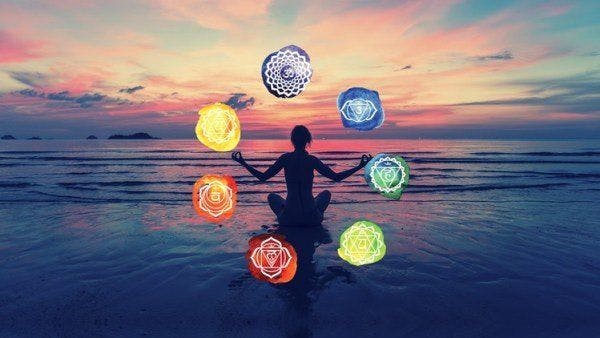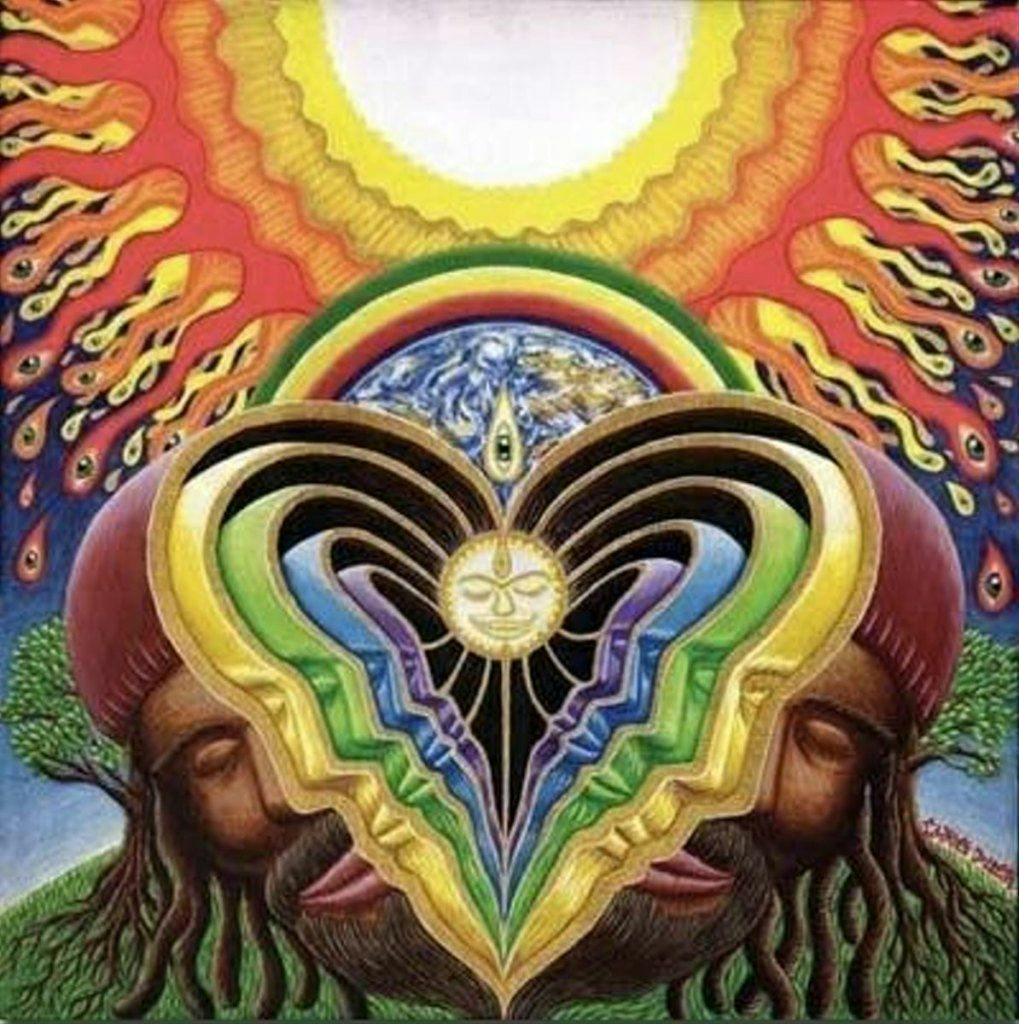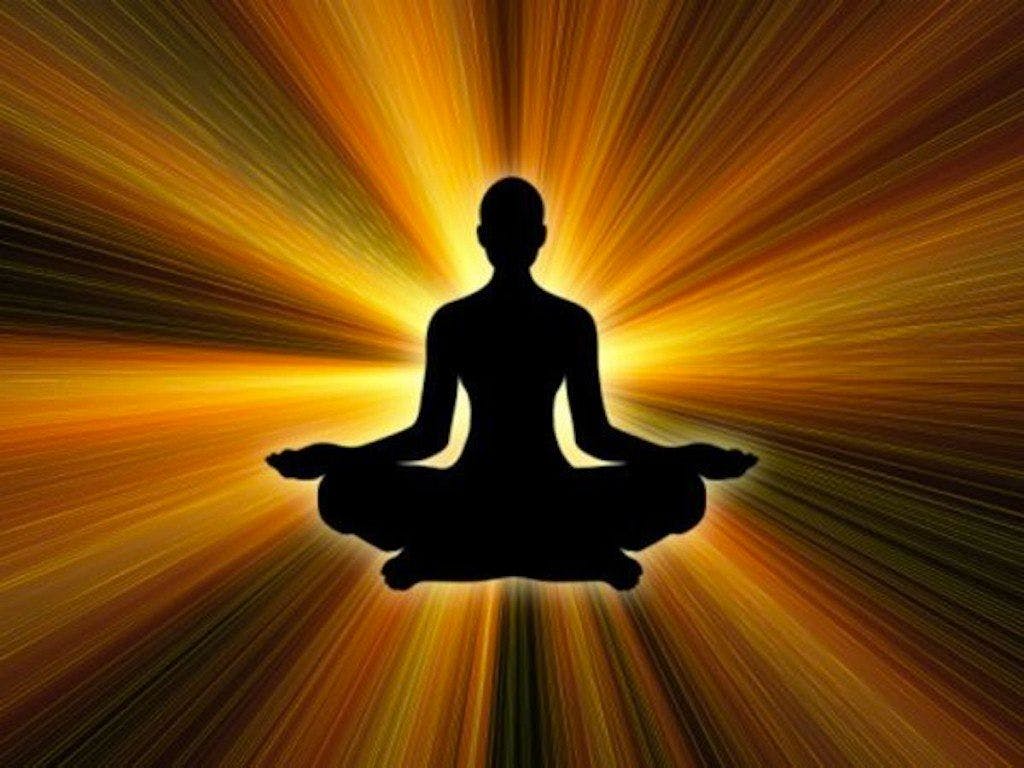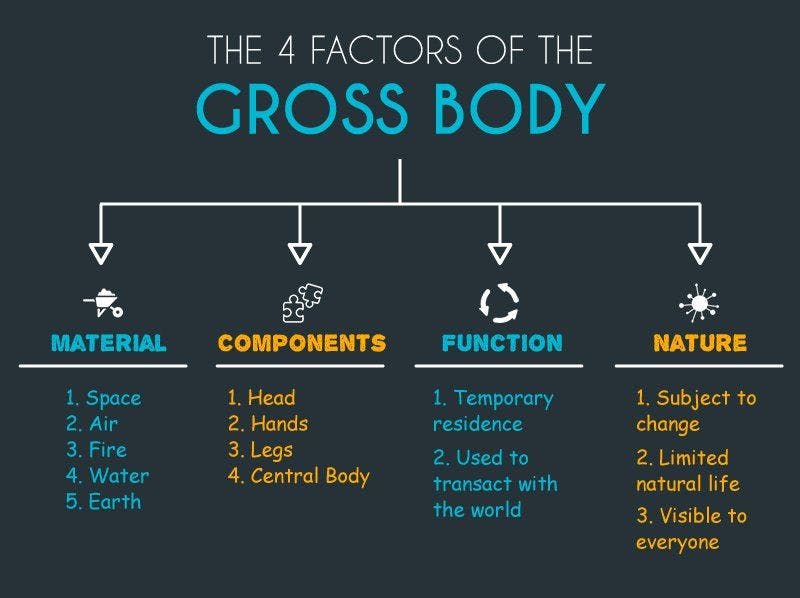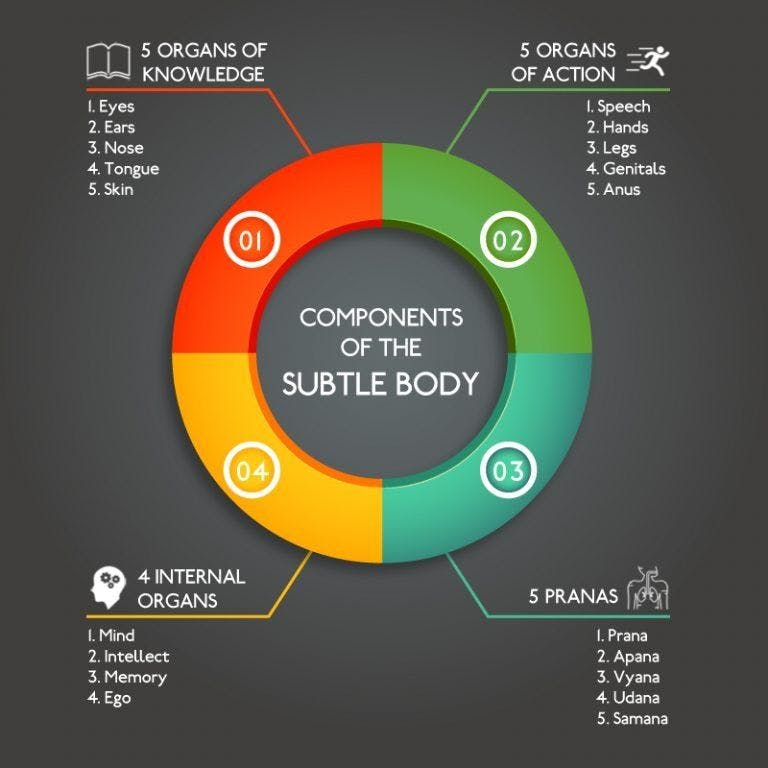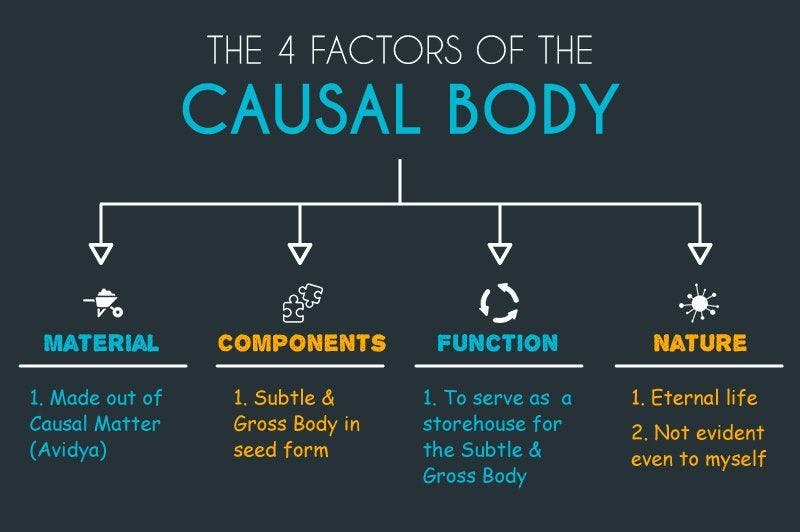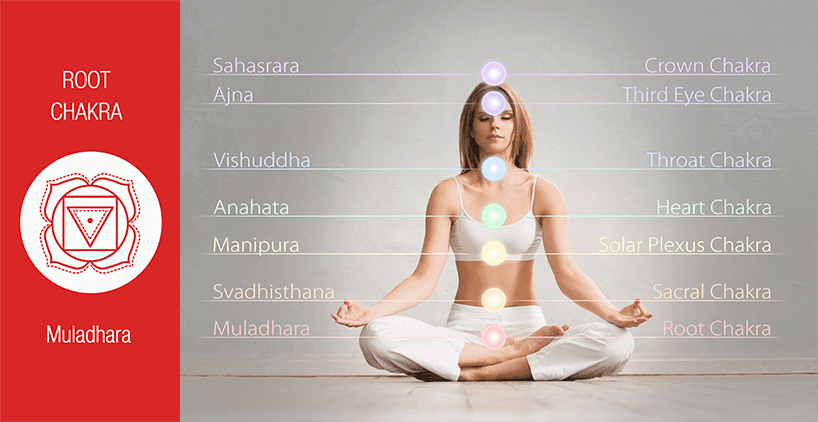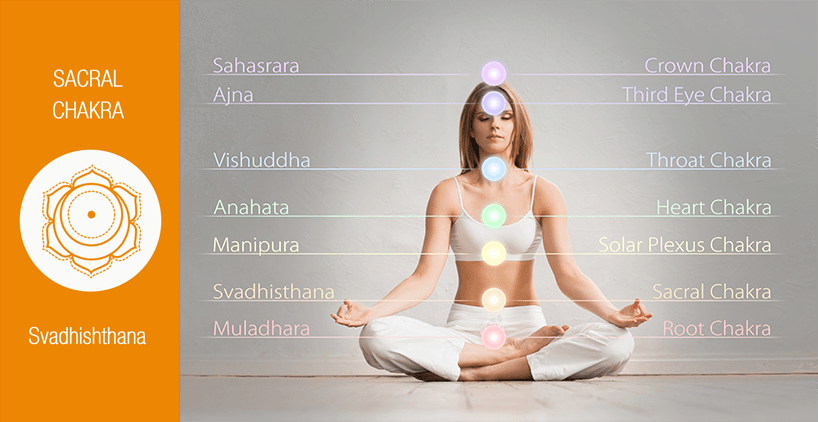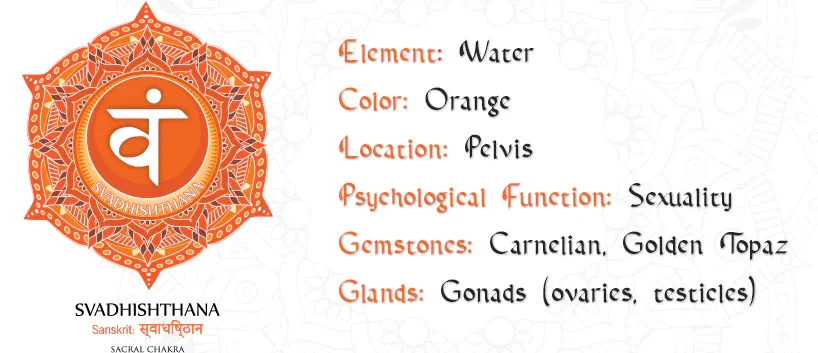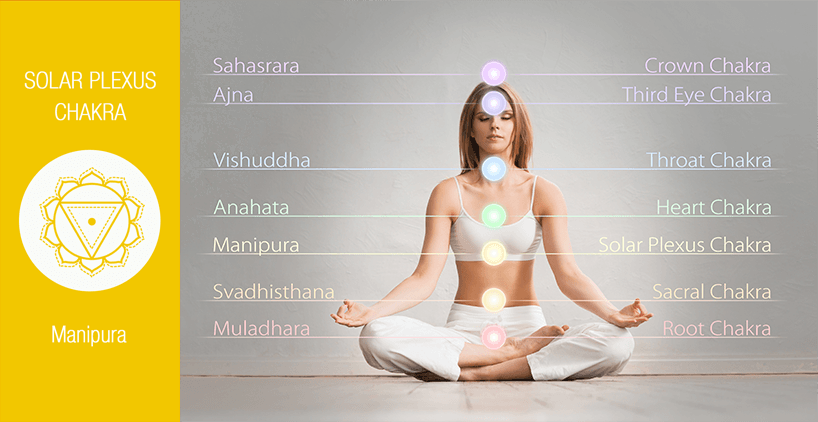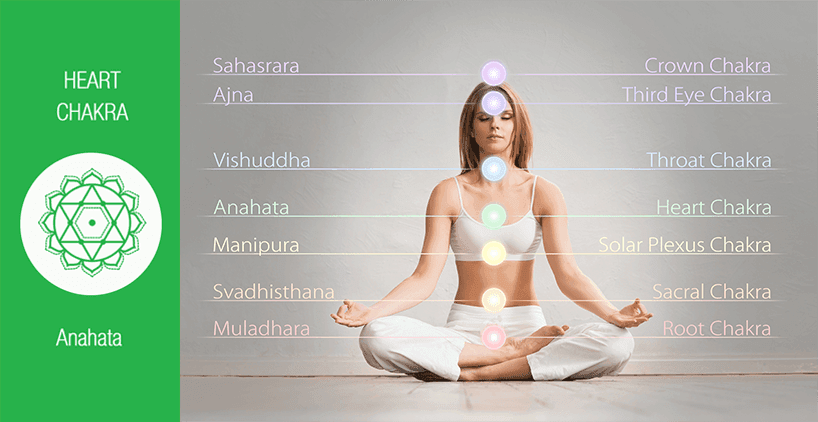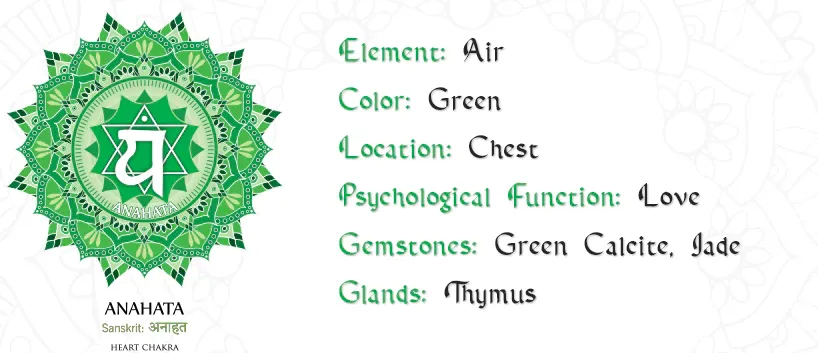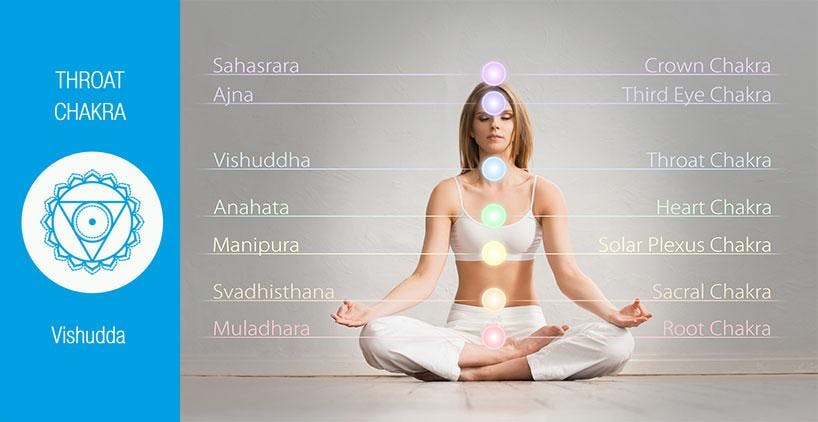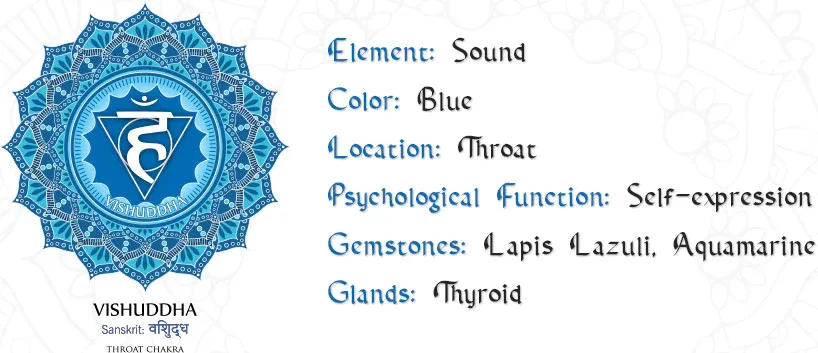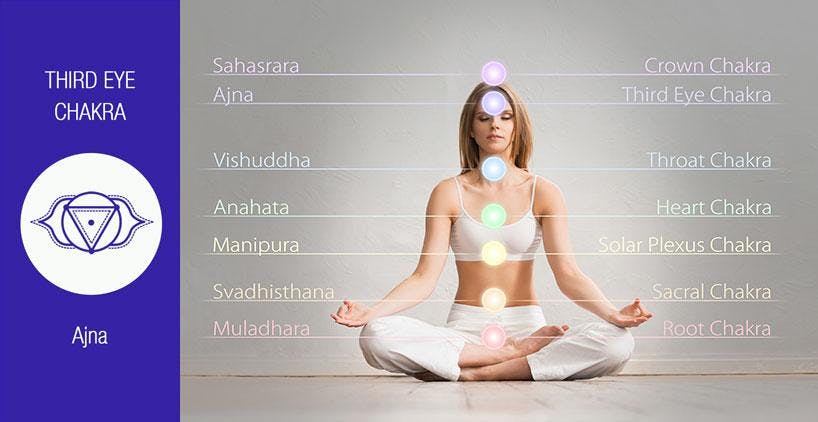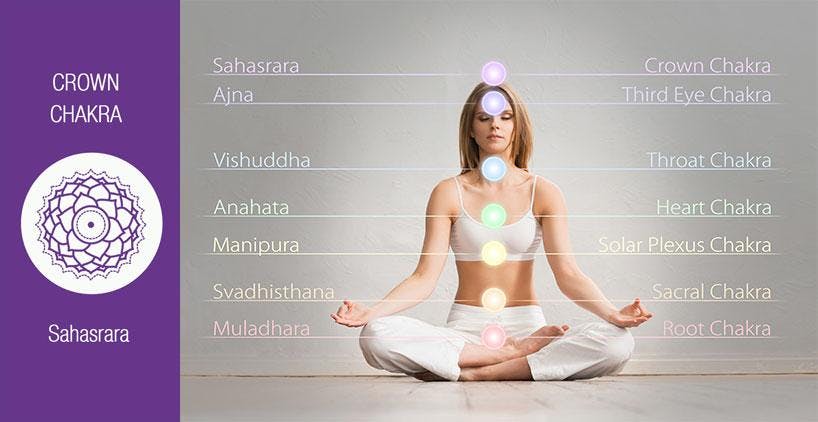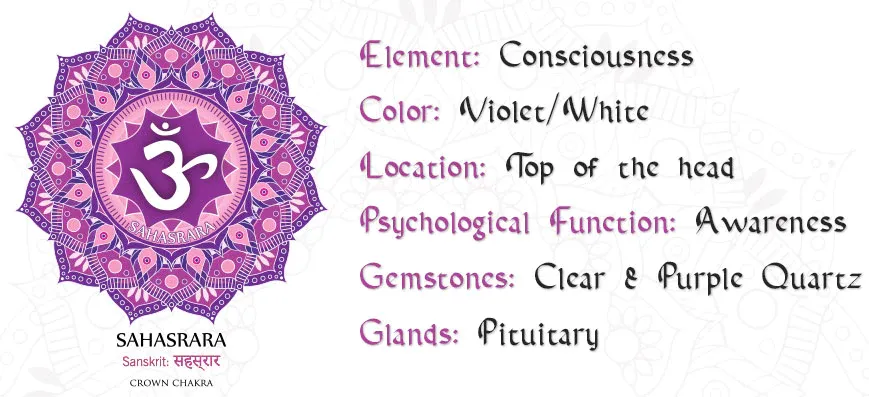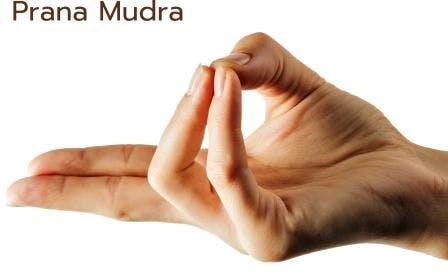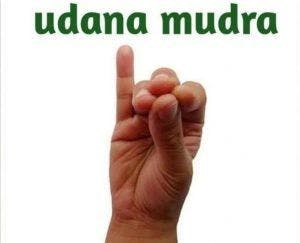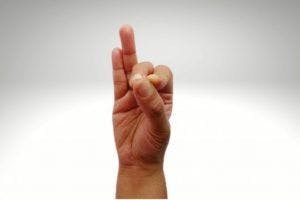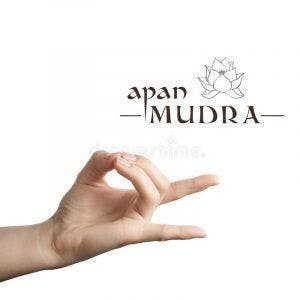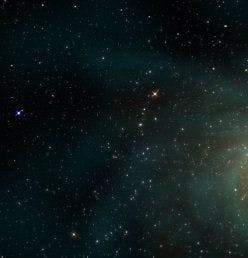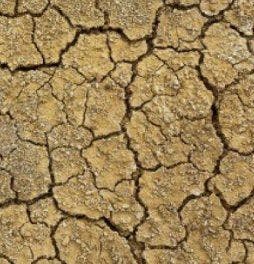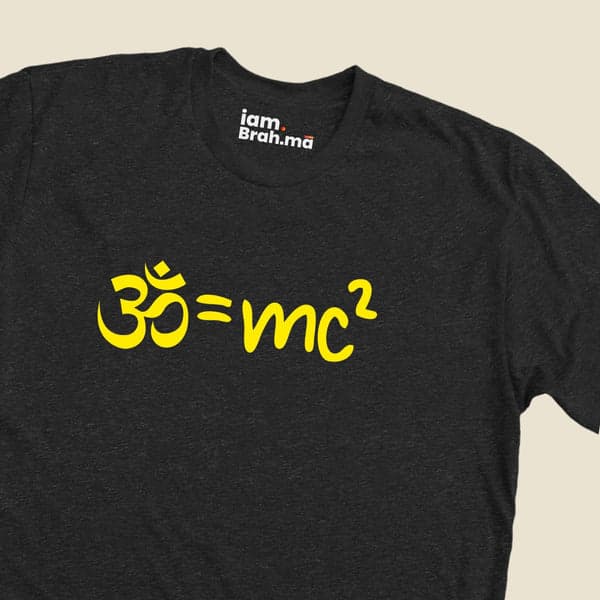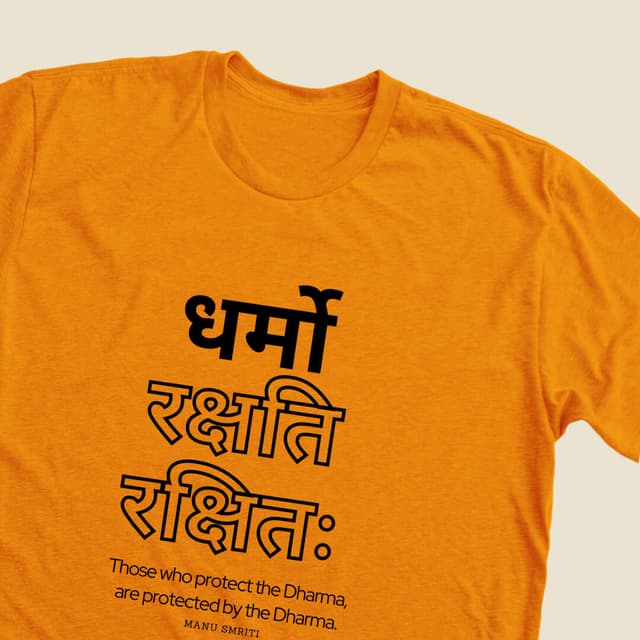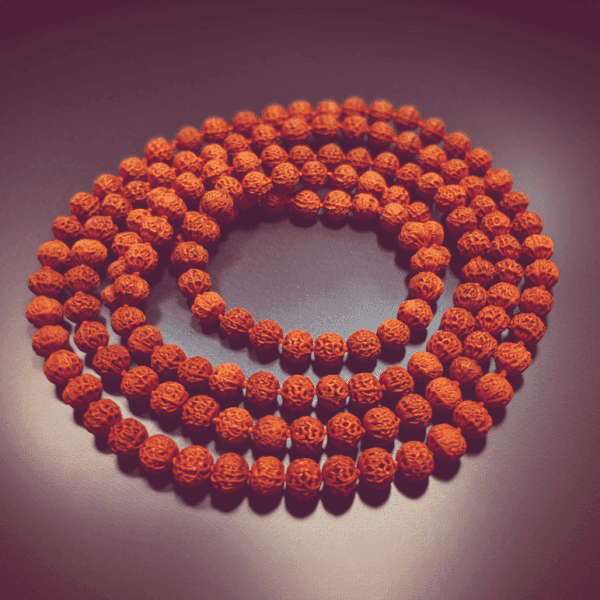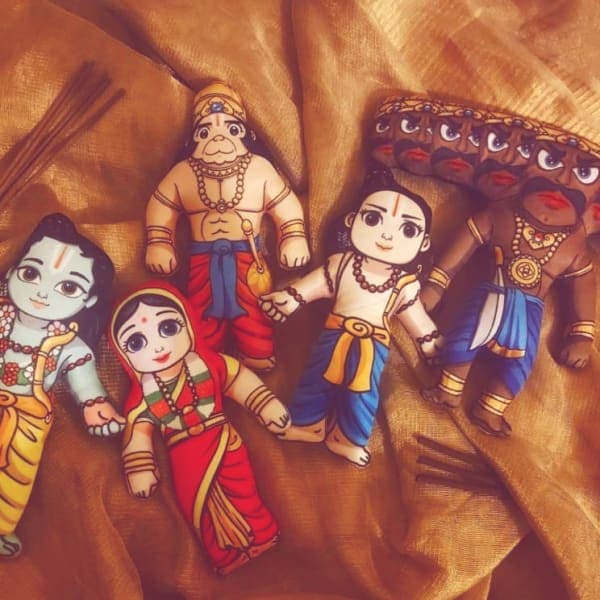9 Principles Of Yoga
Learn fundamental principles of yoga, including Yamas, Niyamas, Asana, Pranayama, Pratyahara, Dharana, Dhyana, Samadhi, and Kundalini.
Panchkoshas
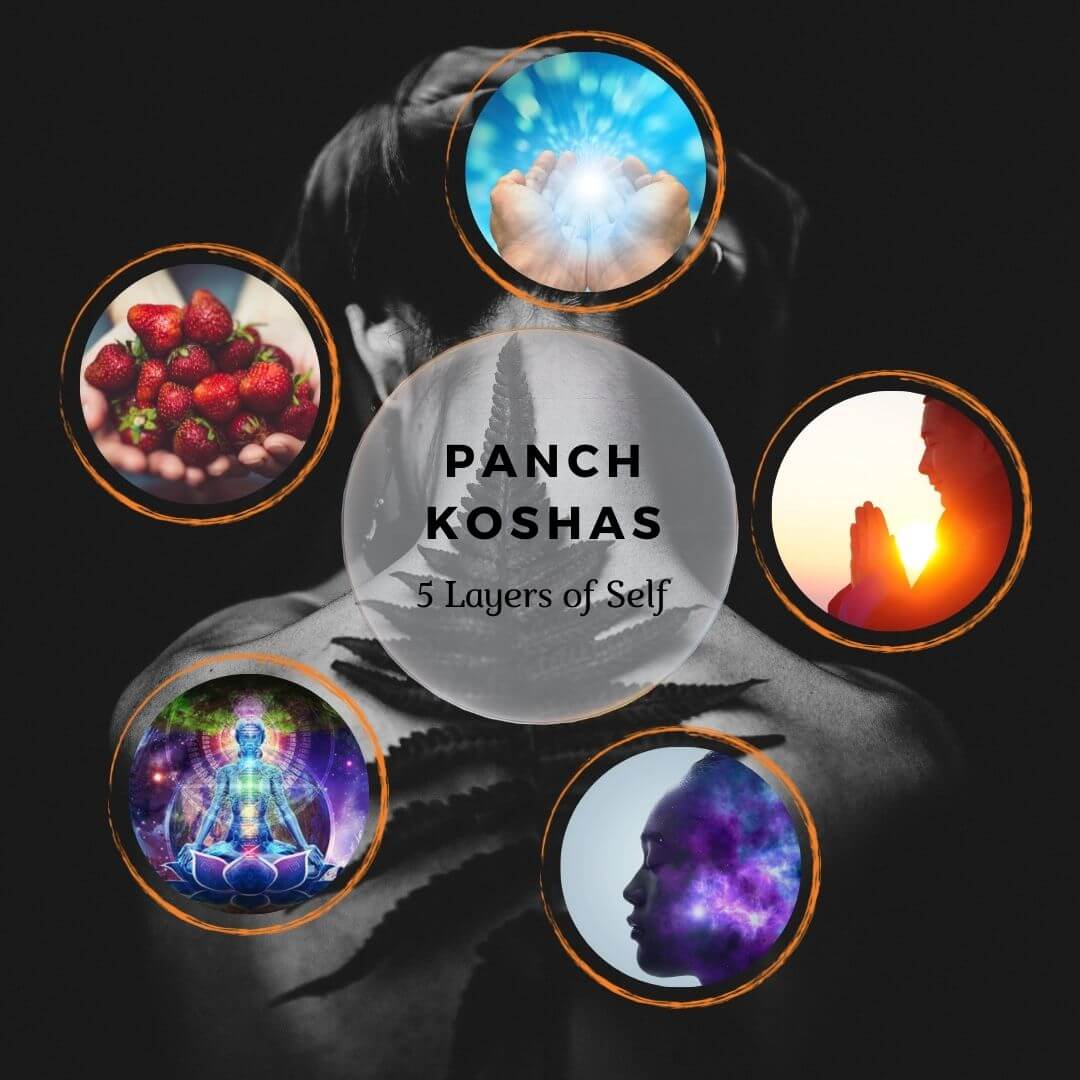
Kosha (also, Kosa) is referred to as “sheath“, one of five (or seven) coverings of the Atman or Self according to Vedantic philosophy.
The ancient Indian model of “Personality”, given in the Taittiriya Upanishad, consists of the ‘five’ sheaths. They are ‘Annamaya’ (food sheath), ‘Pranamaya’ (vital air sheath), ‘Manomaya’ (mental sheath), ‘Vijnanamaya’ (intellectual sheath), and ‘Anandamaya’ (bliss sheath). ‘Annamaya’; a segment of the human system is nourished by ‘anna’, that is, food. ‘Pranamaya’ is that segment which is nourished by ‘prana’, that is, ‘bioenergy’. ‘Manomaya’ is the segment nourished by ‘education’. ‘Vijnanamaya’ is nourished by ‘ego’ and ‘Anandamaya’ is the segment nourished by ‘emotions’.”
According to the Kosha system in Yogic philosophy, the nature of being human encompasses physical and psychological aspects that function as one holistic system. The Kosha system refers to these different aspects as layers of subjective experience. Layers range from the dense physical body to the more subtle levels of emotions, mind, and spirit.
Soul (atman) is wrapped inside five layers (Pancha kosha) of Arishadvarga (the gang of the six internal foes within us). Arishadvarga are considered the 6 inner enemies of a man
Arishadvarga – (ari = shatru = enemy) (shad = 6) (Varga = classes)
Arishadvarga: are the six passions of mind (vicars): Kama (Lust or desire), Krodh (Rage, anger or hatred), Lobh (Greed), Moh (delusory emotional attachment), Mada or Ahankar (Ego or pride), and Matsarya (envy, jealousy)].
Vedic texts mention that the human body is only the physical abode of the soul. The soul is considered to be enveloped in five (actually it is seven koshas if we go into more details of Vedic texts) sheaths which we call as Pancha kosha. The Atman is at the center of the Bliss sheath.
5 sheaths
The soul is enveloped in seven sheaths. The development of all the seven sheaths fully is necessary for man’s complete spiritual evolution.
Here are the 5 sheaths (Pancha kosha) or 7 sheets (layers of existence) of Human beings:
Traya Sharira
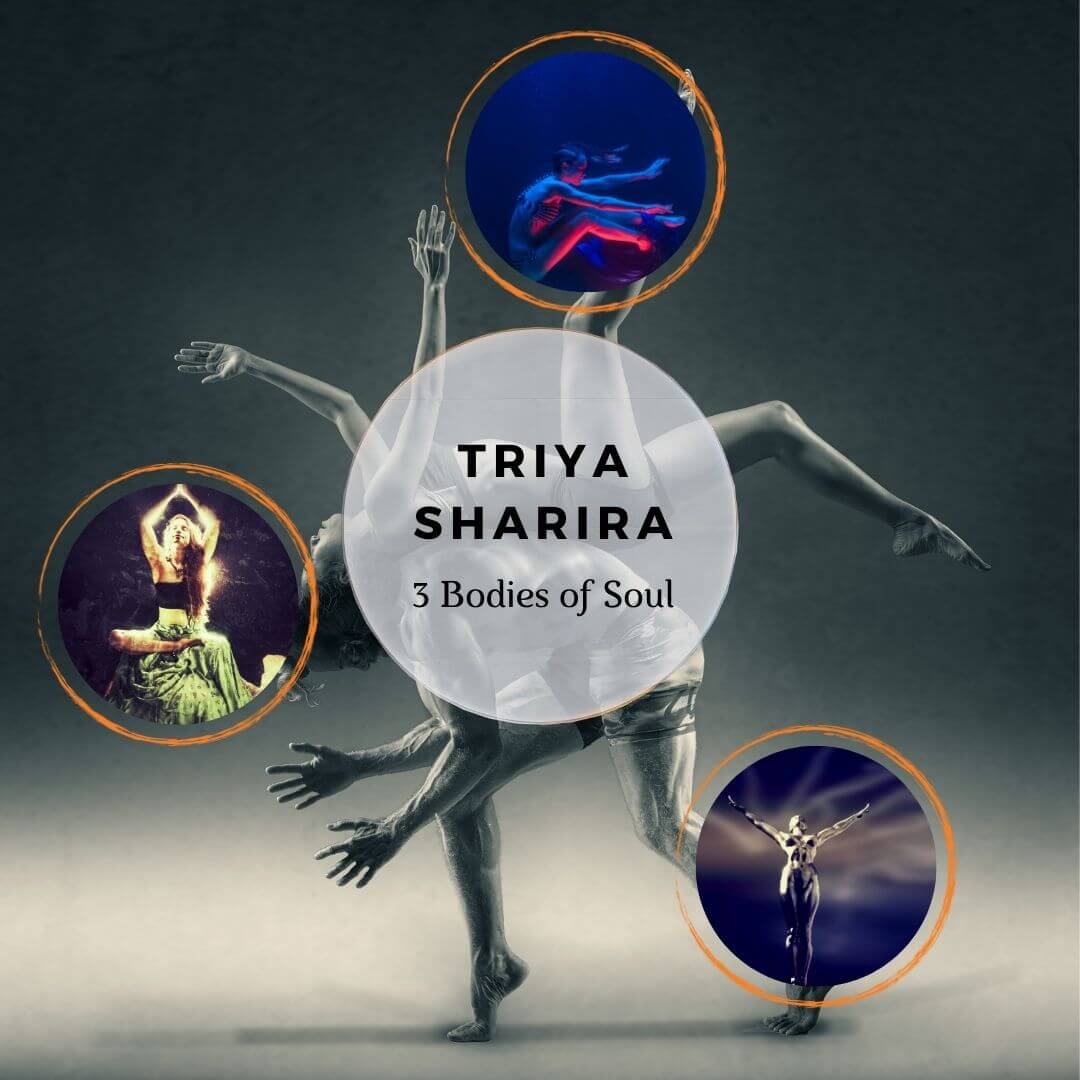
According to Indian Philosophy, the human being constitutes three vital bodies, 5 Koshas (sheaths), and 3 States.
In the philosophy of yoga, Traya Sharira refers to the three bodies or aspects of the human being: the physical body, the subtle body, and the causal body. These three bodies are interconnected and influence one another, and together they constitute the entirety of our being.
The three bodies
Human beings have three bodies where its Koshas reside.
- Gross Body (Sthula Sharira)
- Subtle Body or Astral Body (Linga Sharira)
- Causal body (Karana Sharira)
The soul is different from these three bodies.
What is Granthis?
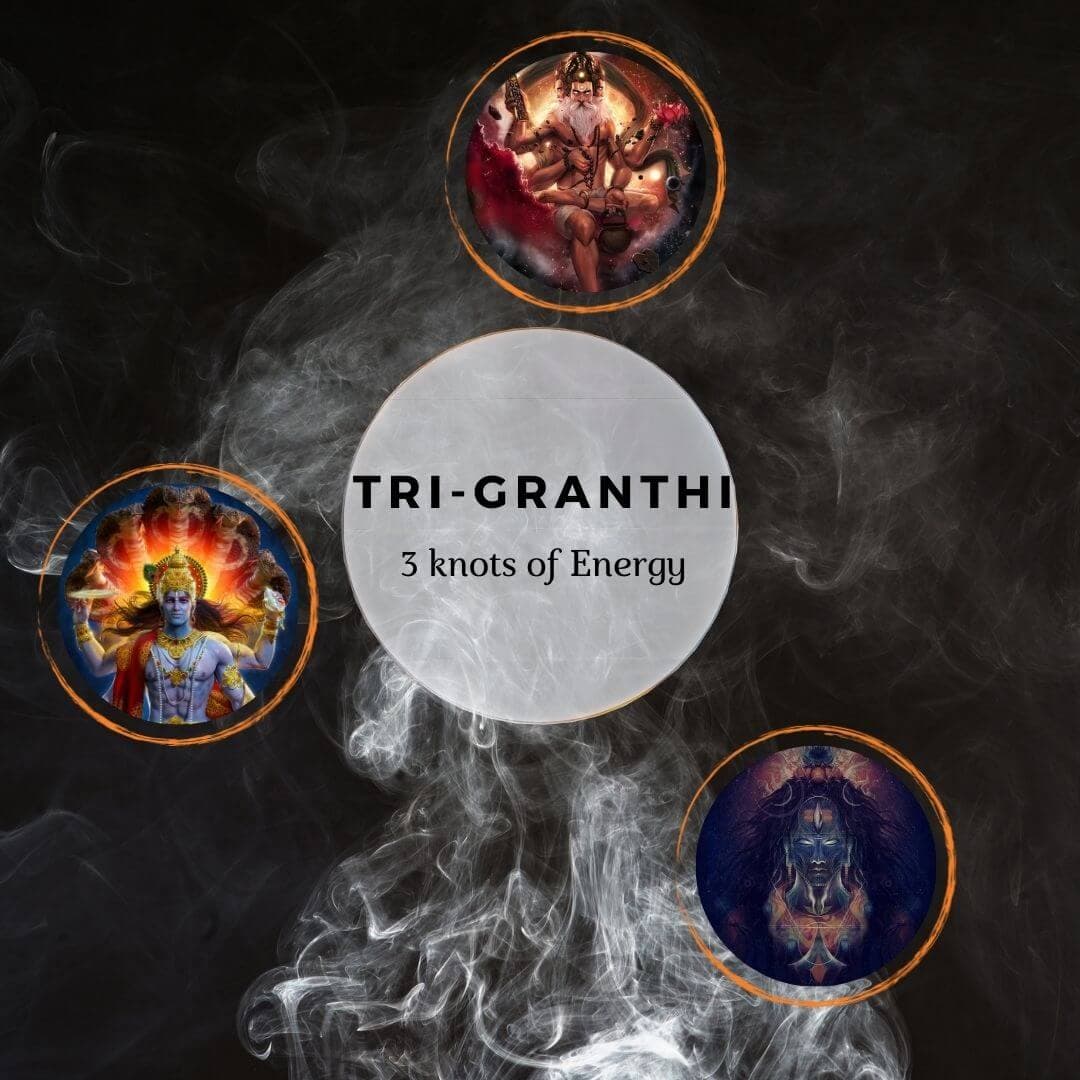
The Sanskrit word Granthi means knot or doubt. It can also be translated as a particularly difficult knot to unravel. Granthis the knots that bind us.
Granthi is psychological or physic barriers to liberation (Moksha) Granthis prevent prana from its path along sushumna nadi. Granthis bind us to mortal fears, and give us a false impression of reality (avidya) and hold is in a state of I-ness (asmita) and hold us to raga (attachment) and dvesha (repulsion)
3 Granthis
There are 3 Granthis in the physical body called psychic knots, which are obstacles in the awakening of kundalini.
The granthis are called Brahma, Vishnu, and Rudra, and they represent levels of awareness where the power of maya, ignorance and attachment to material things is especially strong. Each aspirant must transcend these barriers to make a clear passageway for the ascending kundalini.
What is Kundalini Tantra?
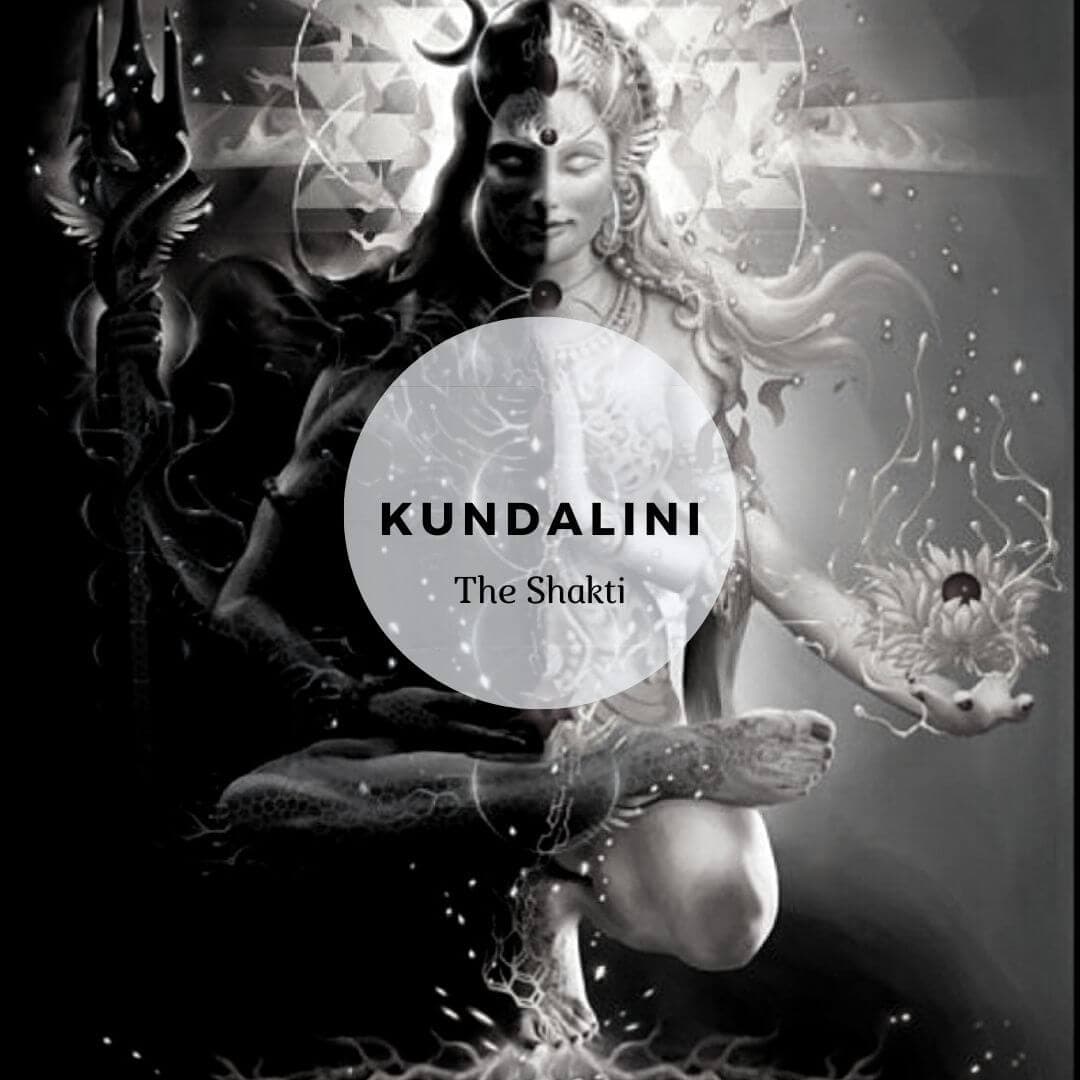
Kundalini or serpent power does not belong to the physical body, nor does it belong to the mental body it exists in the astral body. Kundalini literally means coiled-up energy or the power that dwells in a cave (Kunda). For any transformation to be possible energy is needed to bring it about. For the transformation of consciousness, a special & powerful energy is needed. That is Kundalini. The term “KUNDALINĪ” is based on several words, and therefore has several meanings.
The word-ending “ī” indicates that it relates to the feminine principle and deals with a form of SHAKTI (energy) and PRAKRITI (nature).
- KUNDA is a hole or well into which all debris and rubbish are thrown. Our impressions from earlier lives lie like an amorphous substance deep in the unconscious (Mūlādhāra Chakra).
- KUNDALA means ring (generally earring). A ring or a circle has neither a beginning nor an end. It is infinite and that is why it is a symbol of creation. Cosmic energy is circling constantly; we do not know when the Universe began and how long it will last.
The 3 coils of the snake also represent:
- 3 Gunas (tamsik, rajshik, sattvic).
- 3 states of consciousness (sleeping, waking, dreaming)
- 3 types of experience (subjective, sensual & absence of obj)
And half coil represents the state of transcendence where there is neither waking, sleeping or dreaming. So the 3 & half coil represents the total experience of the universe & the experience of transcendence.
Kundalini is the study of Tantra Yoga, & hence Kundalini is considered as the form of Goddess & should be worshipped as HER power. Tantric science has its foundation in Vedic & yogic teachings, that speak about the transforming word (vak), the energy of consciousness (chit-shakti), or the power of knowledge (jnana-shakti), which are all symbols of kundalini.
According to tantra vidya, it is not a psychic energy to be aroused but a Divine energy to be revered. Efforts to manipulate kundalini through willful practice or forceful techniques are not only dangerous, but fail to recognize the reality of the Goddess and are contrary to her worship. The arousing of the Kundalini can occur through devotion or profound meditation & does not require the use of specific Yoga techniques.
When Yoga techniques are used to arouse the Kundalini – and they are often very helpful, they should be done as a part of the practice of surrender to the Divine or inquiry into the self-nature. The Yoga student should first have a background in meditation, control of senses & an understanding of the working of the mind before trying to arouse the Kundalini.
What is Naadis ?
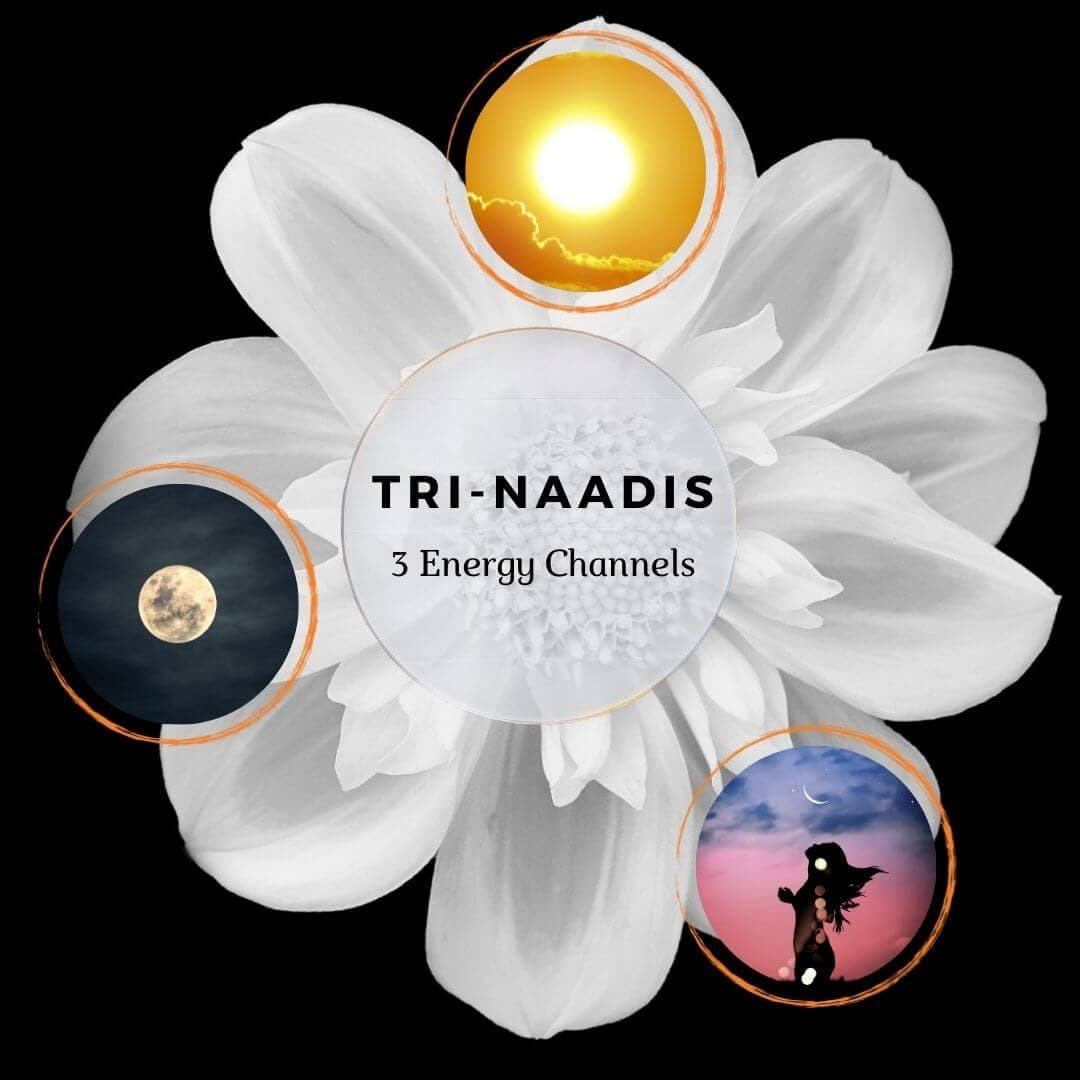
NĀDĪS are energy channels through which PRĀNA – divine energy, life and consciousness – streams. Within the human body there is a subtle and perfect network of 72,000 Nādīs that distribute this life force throughout the whole body. On the physical level the Nādīs correspond to the nervous system, but their influence extends beyond this to the astral and spiritual planes of our existence. If all the Nādīs are functioning correctly then we are healthy and generally feel happy. But nearly every one of us has some physical or psychic problem, which means that some of the Nādīs are not working properly and need to be balanced.
PRĀNA is conscious energy, which means that the Nādīs also transmit consciousness. By means of the Nādīs one can see and hear things at a great distance and move in other levels of consciousness
Astral travel: There are numerous reports from people who were clinically dead and then came back to life again. They nearly all described how they traveled along a tunnel with light radiating at the end. This tunnel is the Nādī through which life escapes from the body.
We can also have such “tunnel experiences” in dreams and on astral journeys. With these, we are not really outside the body but in an altered state of consciousness. The Nādīs make it possible for us to take mental journeys of discovery throughout the entire Universe. With their help, our consciousness is able to go to any place we would like without the body having to move at all.
Three Nādīs
Three Nādīs are of special importance – IDĀ, PINGALĀ and SUSHUMNĀ
Nadis
The moon symbolizes the mind with its changeable feelings, whereas the sun represents the intellect. Just as our emotions and thoughts change constantly, the moon is also constantly changing its form. The intellect, however, is a stable and constant principle like the sun. Only when harmony and balance prevail between the moon system and sun system are we healthy and capable of developing further mentally and spiritually?
We are able to activate and harmonize the Nādīs through the breath. When we breathe through the left nostril in Prānāyāma we activate the Idā Nādī. The Idā Nādī cools, quietens, and refreshes the body and mind like the silvery light of the moon. Pingalā Nādī, however, which is influenced by breathing through the right nostril has a warming and activating influence, in the same way as sunshine warms the earth and stimulates the growth of vegetation.
Idā and Pingalā begin in the brain at approximately the level of the Pituitary Gland. Idā has an effect on the right side of the brain whilst Pingalā influences the left hemisphere. To maintain balance both Nādīs run in a snake-like course from one side of the body to the other. At the points where they cross, they also meet with the central Nādī, Sushumnā. At those places where the power and radiance of the sun and moon meet, together with the strengthening effect of the Sushumnā, very powerful energy centers are called CHAKRAS form.
The first crossing of the Nādīs at the top of the spinal column forms the Throat Chakra (Vishuddhi Chakra) and the last crossing at the base of the spinal column forms the Root Centre (Mūlādhāra Chakra). Here the Idā Nādī flows on the left side of the body and the Pingalā Nādī on the right side, and it is precisely here that our dormant consciousness lies hidden.
At several places along the spinal column, the Nādīs form a type of knot (GRANTHI), each of which constitutes a key point in our spiritual development. When these knots are “untied” the energy located within them is activated and the hidden powers (SIDDHIS) are given to us as healing powers, the seeing of past and future, the seeing of auras, and other supernatural abilities.
Other terms for Idā, Pingalā and Sushumnā are GANGĀ, YAMUNĀ and SARASVATĪ. These are the names of the three holiest rivers in India. Gangā and Yamunā flow on the surface but Sarasvatī flows underground. It rises to the surface only once every twelve years. This event happens in conjunction with a particular planetary constellation and is known as the KUMBHA MELĀ. This great spiritual festival of India held at the confluence of these three rivers (Sangam) is attended by millions of people who come to attain liberation from their Karmas and the cycle of rebirth by bathing in the sacred waters. But for the Yogi the three main Nādīs are the “divine rivers” and the Āgyā Chakra (the eyebrow centre) where these Nādīs meet is the holy place of pilgrimage where the Yogi attains liberation.
Just as the mysterious river, Sarasvatī, only rarely appears, the Sushumnā Nādī is only active for certain short periods of time (for example, at dawn and dusk). When the three main Nādīs unite only one stream of consciousness flows – the spiritual energy of the Sushumnā Nādī. The energy also flows through this Nādī in deep meditation and in Samādhī. For as long as the Sushumnā is inactive we are plagued by constantly changing CHITTA VRITTIS – thoughts, emotions, worries, etc. But once the Sushumnā begins to flow the waves of the mind come to rest and we “bathe” in the bliss of divine consciousness.
- Nadi is the flow of energy
- Shiva samhita – 350000
- Gorakh Satarka – 72000 Nadi
- GS – “When Nadis are full of impurities vayu doesn’t enter them”.
- Impurities : wastes & residue of sensuous living & desires.
- Fat in blood vessels example
- Due to waste accumulation, body capacity to circulate energy weakens. Body becomes lethargic, energy level decreases, prevent from activation of chakras and higher brain functions.
- Intermediate link between physical body & mind. So can be handle by controlling and purifying the pranic body through physical body.
- By strengthening sympathetic & parasympathetic nervous system, ida & pingala directly affected.
- By developing CNS – sushumana is activated.
Tri Guna

Guna is a Sanskrit word that translates as “quality, peculiarity, attribute, or tendency.” In yoga and Ayurveda, a guna is a tattva or element of reality that can affect our psychological, emotional, and energetic states. The three gunas are described as being constantly in flux and interacting with one another, in a playful state referred to as maya or illusion. The patterns of the interplay of the gunas can define the essential qualities of someone or something, and these patterns can highly influence the path and progress of life. For yoga practitioners, awareness of the gunas provides a GPS to allow us to make choices to be more balanced, peaceful, and harmonious both on and off our mat. Cultivating the ability to identify and understand the nature of the gunas brings us closer to seeing the universal truth of oneness.
In the philosophy of Yoga, all matter in the universe arises from the fundamental substrate called Prakriti. From this ethereal Prakriti, the three primary gunas (qualities of energy) emerge creating the essential aspects of all nature—energy, matter, and consciousness. Hence, all functions of body, mind & world are dependent on the interplay of the 3 Gunas. The cosmic nature has 3 fold characteristics in its nature; in this sense, every action, thought, & event is created due to the interaction of the 3 gunas. One Guna alone does not influence the personality. There is always a combined influence of 3 gunas.
Prakriti has 3 properties
- Sattva or Vibration (Prakash),
- Rajas or Activity
- Tamas or Stability
Tri Guna
Working With the Gunas
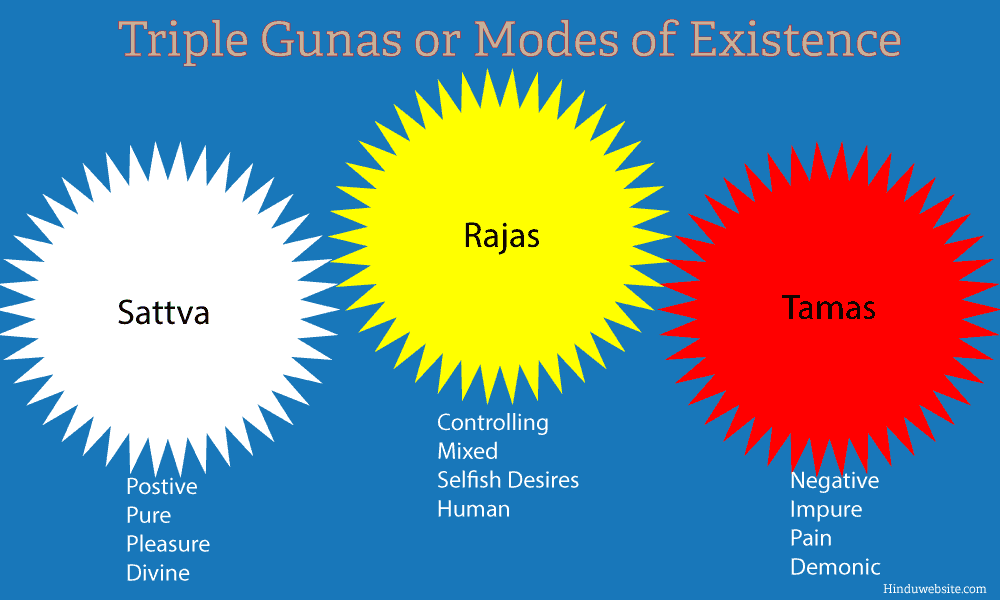
The mind’s psychological qualities are highly unstable and can quickly fluctuate between the different gunas. The predominant guna of the mind acts as a lens that affects our perceptions and perspective of the world around us. Thus, if the mind is in rajas it will experience world events as chaotic, confusing, and demanding and it will then have a strong tendency to continue to react to events in a rajasic way. Therefore, for yogis to make progress along the path we must practice self-observation and discernment to witness and not react to the activities of the gunas. We must also have the inner-strength and willpower to consciously shift our thoughts and actions away from tamas and rajas towards sattvic balance and purpose.
- To reduce tamas avoid tamasic foods, oversleeping, overeating, inactivity, passivity and fearful situations. Tamasic foods include heavy meats and foods that are spoiled, chemically treated, processed or refined.
- To reduce rajas avoid rajasic foods, over-exercising, overwork, loud music, excessive thinking and consuming excessive material goods. Rajasic foods include fried foods, spicy foods, and stimulants.
- To increase sattva reduce both rajas and tamas, eat sattvic foods and enjoy activities and environments that produce joy and positive thoughts. Sattvic foods include whole grains and legumes and fresh fruits and vegetables that grow above the ground. All of the yogic practices were developed to create sattva in the mind and body. Thus, practicing yoga and leading a yogic lifestyle strongly cultivates sattva.
What is Chakras ?
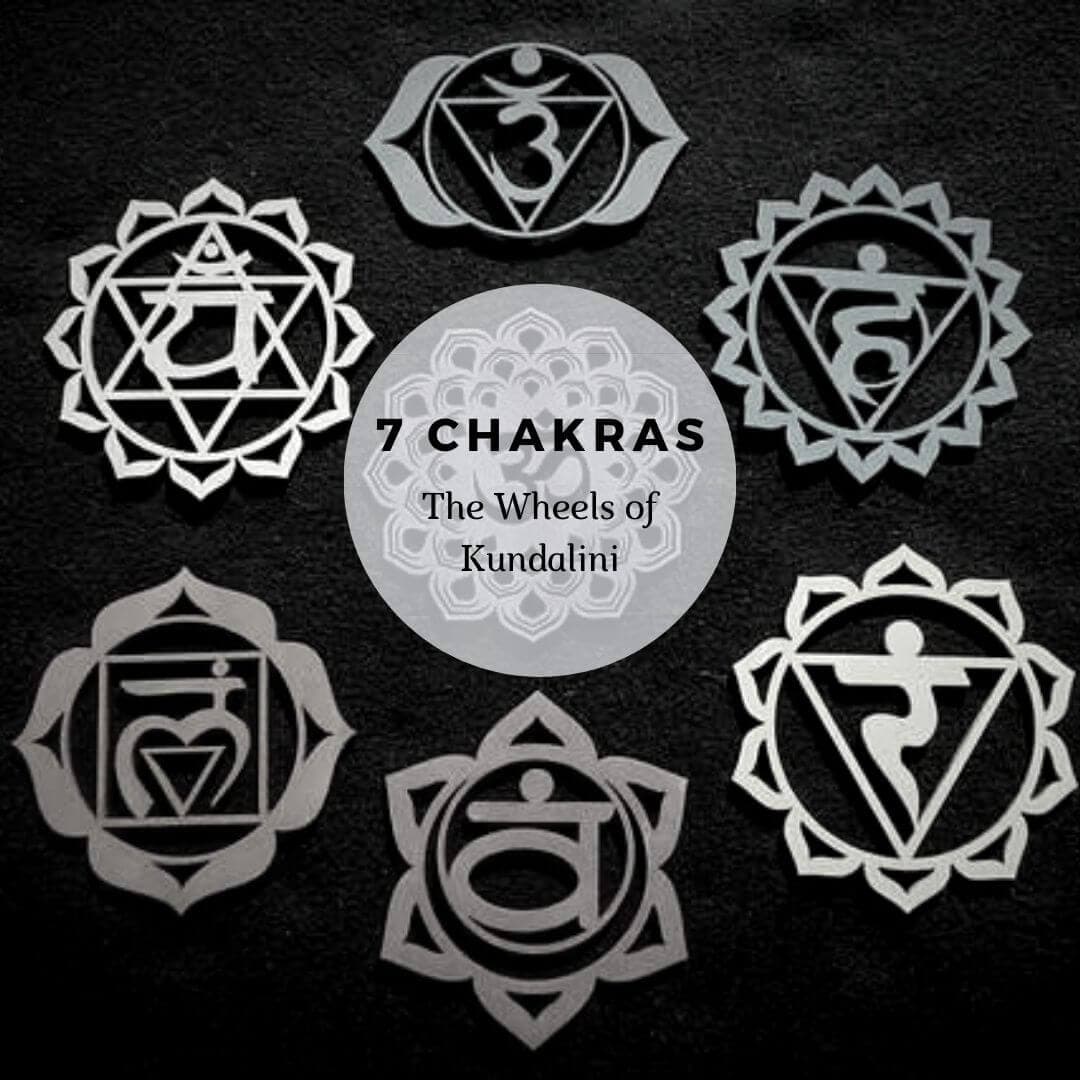
Chakra is a Sanskrit word meaning ‘wheel’, which means it is spinning, hence Chakras are the spinning energy centers that directly influence your well-being & how consciously & happily you create your life. They are located in the astral body along the spine, starting at the base of the spine and running upwards to the crown of the head. The Chakras coincide with a gland in the physical body and each radiates a specific color and energy. Since each chakra relates to specific spiritual, emotional, psychological, and physical aspects of our being,
When all chakras are balanced, you feel safe, creative, strong, & secure in yourself & in relationships. You are comfortable speaking your mind & your thoughts come together with clarity & ease. You also feel connected to your intuition & the vital energy of the universe.
There are seven major chakras in the body. Each of the chakras can be overactive or deficient, however, which means they are blocked & not in balance. Chakras can be out of balance since your time in the womb or even earlier: in yogic view, the karma you carry from the past lives is stored in the chakras. Each chakra root is planted in the major current of energy that runs up & down the center of the spinal column. This line of energy is called sushumna nadi. Along with susshumna 2 major currents of energy(nadis), cross back & forth, these are called ida & pingla nadis.
7 chakras
The location of junctions of all these 3 nadis in the spine are called location of chakras., & those currents cause the chakras to spin. Chakras are affected by the flow of energy as it travels along the sushumna, ida & pingla, this energy is called ‘Prana’.
- The Root Chakra – Muladhara
- The Sacral Chakra – Svadhisthana
- The Solar Plexus Chakra – Manipura
- The Heart Chakra – Anahata
- The Throat Chakra – Vishuddha
- The Third Eye Chakra – Ajna
- The Crown Chakra – Sahasrara
Evolution in chakras
Mooladhara is the most basic fundamental chakra from where human evolution starts and sahasrara is the last chakra where evolution is completed. Beyond sahasrara, we experience divine energies and inner experiences come our way in meditation. Mooladhara is the first chakra in human incarnation but it is the last chakra that animals have the capacity to awaken.
Below Mooladhara there are other chakras known as Patalas, representing the evolution of the animal kingdom. These chakras only connected to sense consciousness & not connected to mental awareness. There is no individual awareness & ego which starts from mooladhara. Therefore upto mooladhara chakra evolution takes place automatically. Animals do not practice pranayama or take sannyasa, Nature controls them completely and nature is responsible for every phase of evolution. However once kundalini reaches muladhara chakras, evolution is not spontaneous because Man is different from animals, he has awareness about time & space, he has an ego. So man has higher consciousness and once it has it he has to work for its evolution. That’s why kundalini keeps sleeping in mooladhara chakra until & unless it is pushed for awakening & progress.
Names of animal’s chakras are,
Atala, vitala, satala, talatala, rasatala, mahatala, patala
Animal’s lowest chakra starts from ‘patala’, it is the dimension representing total darkness and state of dormant & static.
Above sahasrara also there are chakras called as lokas, which represents higher divine consciousness. Lower chakras are the tamasic phase of evolution, from mooladhara onward we pass through the rajasic phase & fom sahasrara onwards we enter the sattvic phase of evolution.
10 Pranas

Prana is energy, vitality, power. Prana is the foundation and essence of all life; the energy and vitality that permeates the entire Universe. Prana flows in everything that exists.
Furthermore, Prana is the connecting link between the material world, consciousness and mind. It is what makes life on the material level possible. Prana regulates all physical functions for example, the breath, the supply of oxygen, digestion, elimination and much more. The function of the human body is much like a transformer, receiving energy from the Universal flow of Prana, distributing that energy, and then eliminating it. If a person or a room has a healthy, harmonious vibration, we say: “There is good Prana here”. Illness, on the other hand, disturbs or blocks the flow of Prana. As we develop the ability to control Prana, we gain harmony and health, of both body and mind. In addition to this, with long and consistent practice an expansion of consciousness is experienced.
The 5 Pranas
Prana is divided into ten main functions:
- The five Pranas – Prana, Apana, Udana, Vyana and Samana.
- The five Upa-Pranas – Naga, Kurma, Devadatta, Krikala and Dhananjaya.
The five Upa-Pranas
The five Upa-Pranas – Naga, Kurma, Devadatta, Krikala and Dhananjaya.
Flow of Prana
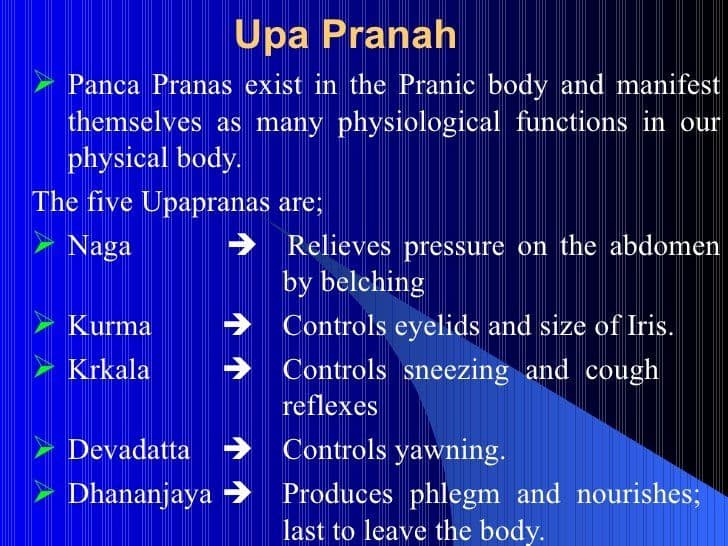
There are four areas in the human body where the flow of Prana is particularly intensive – through the sole of each foot and the palm of each hand. The feet are closely related to the earth element and represent negative polarity. Therefore one should never concentrate on the feet in meditation. Conversely, the energy of the palms originates from the heart. It is related to the air element and produces positive polarity.
Panch Mahabhutas
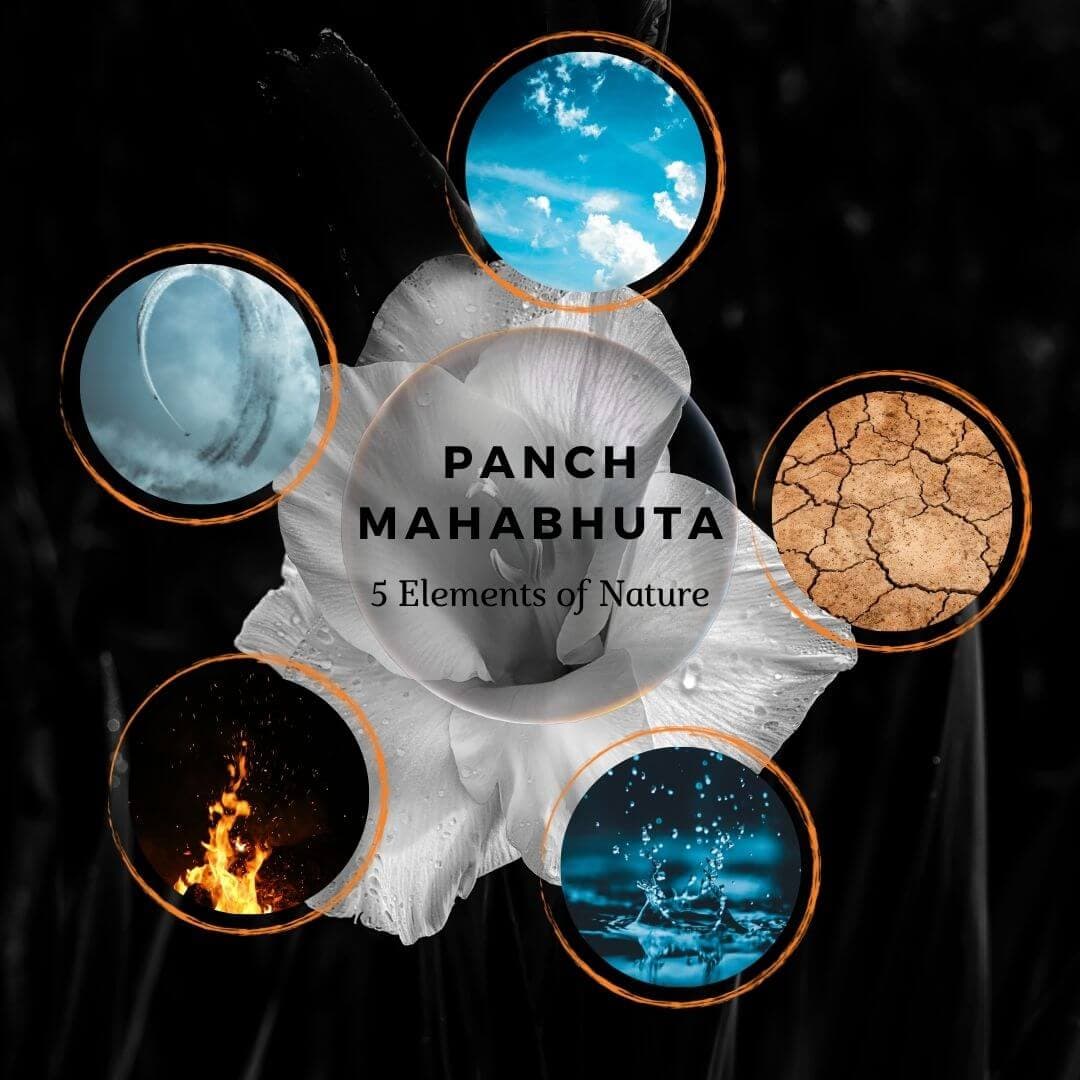
Pancha meaning 5, Maha meaning big, Bhuta meaning elements.
So Panchamahabhuta is the five big elements of the universe that we can see and feel. These elements are the structural entity of the universe. According to Ayurveda everything in life is composed of the Panchamahabhutas – Akash (Space), Vayu (Air), Jal (Water), Agni (Fire) andPrithvi (Earth). Omnipresent, they are mixed in an infinite variety of relative proportions such that each form of matter is distinctly unique
The 5 Great Elements
Humans are the perfect example of the universe because we are the microcosm of the universe and made of the very elements from which the entire universe is made from and these elements are referred to as “Panchamahabhutas” … translated as “The 5 Great Elements“.
...
